
| Farming snails 2: Choosing snails; Care and harvesting; Further improvement source ref: fb34fe.htm |
| Taking care of your snails |
 |
|
Taking care of your snails
152. After you have put your snails in their pen, watch them carefully to see that they are eating well.
153. If you have given them enough of the right kinds of food plants, they will eat a lot and you will have very little to do for them.
154. However, here are some things that you must do
• wet the plants and moisten the ground
• take care of the plants
• take away the weeds and the creeping grass
Wet the food and shelter plants and moisten the ground
155. You have already been told that the leaves of the food and shelter plants must be wet and clean and that the ground must be moist (see Items 52 to 58 in the last booklet).
156. If there is too lime dew and not enough rainfall during the time when the plants and the snails are growing, you will have to water the plants and the ground yourself.
157. If it is dry, you should water the plants and the ground at least every second day. However, if it is very dry, you may have to water them every day.
158. Never water in the morning or during the day when the sun is hot. Always water in the evening at about sunset.
159. If you water when the sun is hot, the snails will begin to move away from the shelter plants and the hot sun may kill them before they can find shelter again.
160. An easy way to wet the plants and moisten the ground is by hand. First fill a bucket with water and wrap a piece of cloth around your hand.
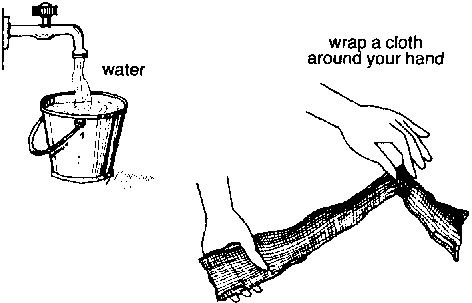
Wrap a cloth around your hand
161. Then, dip your hand with the cloth into the bucket of water and gently splash the plants and the ground.
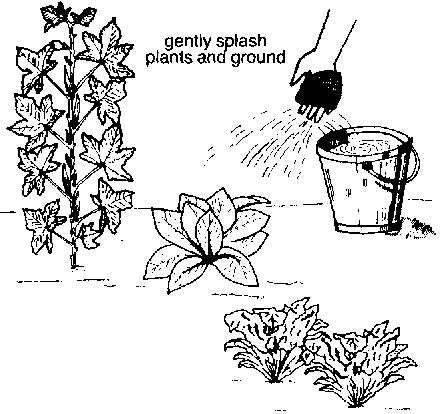
Gently splash plants and ground
162. Continue to splash the plants and the ground gently until you have watered the whole pen.
163. When you have finished, the leaves of the plants should be wet and the ground should be moist.
164. You can tell when the plants are wet enough and the ground is moist enough when you can see your snails moving about easily.
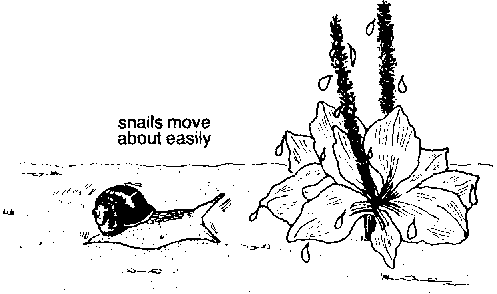
Snails move about easily
165. Remember: the soil must be moist and not wet in order for snail eggs to hatch.
Note
You have already been told that if you live in a place that has a dry season when the plants do not grow, snails dig into the ground to rest. Never water at this time or your snails may come out of the ground when they should not.
Tend the food and shelter plants
166. Watch all of your plants to see that they are growing well and that they do not get too tall or too thick.
167. Plants that are too tall or thick stop the dew from reaching the leaves and stop the rain from washing away the dust and the dirt that snails leave when they move about.
168. If you see that the plants are not being wet or washed by dew or rain, cut them back.
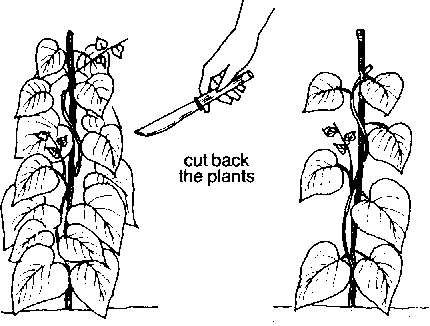
Cut back the plants
Take away the weeds and creeping grass
169. After your snails are in their pen you must be sure to take away all weeds and especially creeping grass as soon as you see them.
170. Creeping grass grows very fast and so thick that it can kill the food and shelter plants. If this happens, your snails will have no food and no place to find shelter.
171. Taking away weeds and creeping grass when snails are in the pen is very difficult. So, you must be very careful not to hurt them or step on them.
172. If the weeds and creeping grass get too thick, it may be better to move the snails before you take weeds and creeping grass away (see Item 183 in this booklet).
173. Keep the path around the pen clear of weeds, grass and creeping grass. This will help to keep weed seeds and unwanted plants out of the pen.
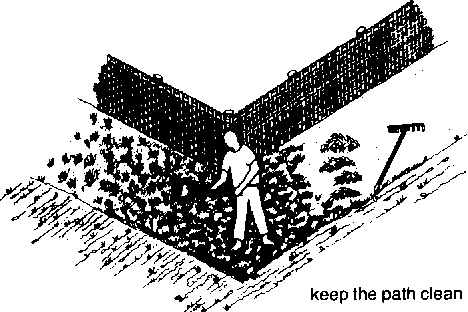
Keep the path clean
174. If the path is clean, insects will be less likely to cross it to get into the pen and you will be able to see signs of mice, rats and shrews.
Feeding your snails other kinds of food
175. There are a number of reasons for giving your snails other kinds of food. Here are a few
• when you have not planted the right kinds of food plants
• when you have too many snails for the number of food plants that you have planted
• when most of the food plants in the pen have been eaten by the snails
176. If you decide for any of these reasons that you must give your snails other kinds of food, here are some foods that snails like to eat
• the outside leaves of vegetables such as cabbage or cauliflower
• the tops of vegetables such as carrots or beets
• ripe banana fruit
• most waste fruit and vegetables
• cut- up papaya, melon or squash
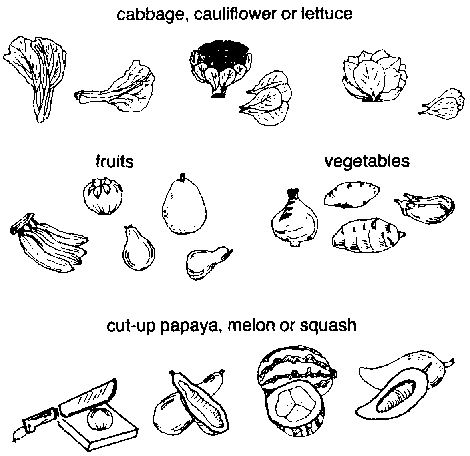
Food snails eat
177. There are many other foods that snails like to eat. If you have some food that you think might be good, try it with your snails and see if they like it.
178. If your snails are not eating their food plants well, you also can try some others. Cut pieces from the plant that you want to try and put them in the pen.
179. If you see that your snails like the new food plants better, you can use these plants when you build the second pen.